At the United Nations, youth leaders call for true climate action
‘We are here in our rightful place to demand consequential climate action’
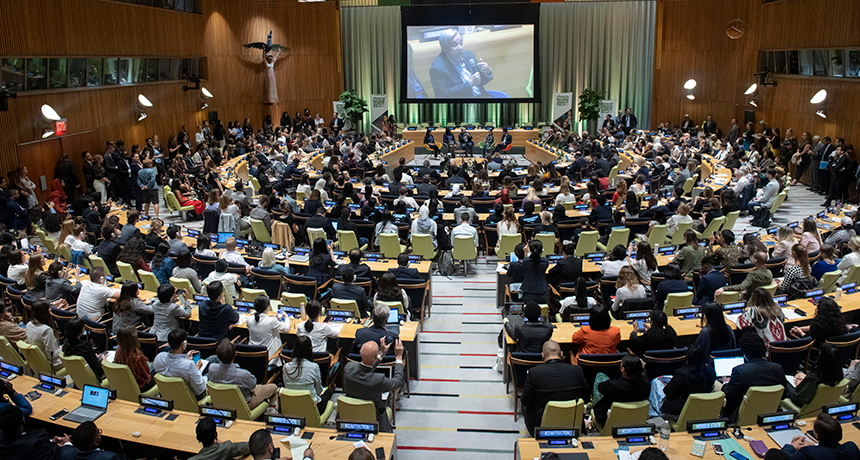
More than 700 youths and young adults gathered at the United Nations on September 21 in New York City for the first-ever U.N. Youth Climate Summit.
United Nations
By Greta Moran
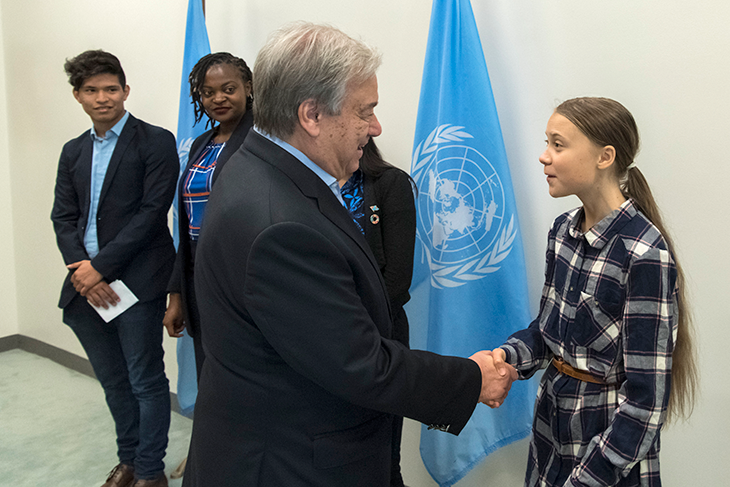
New York City — Last weekend, young people around the world rallied behind a common cause: urgent climate action. On Friday, students from some 150 countries skipped school to participate in the largest climate protests ever. These were the high point in a year of youth climate strikes that began with just one teen, Greta Thunberg, now 16, taking action. She sat outside the Swedish parliament again and again (before later speaking to delegates of a United Nations Climate Change Conference in Poland). On Saturday, she and more than 700 other young climate leaders took action once more — here, at the first United Nations Youth Climate Summit.
To kick off the summit, Thunberg addressed the attendees. “Yesterday, millions of people across the globe marched and demanded real climate action,” she said. “We showed that we are united and we, young people, are unstoppable.”
The historic event is the largest-ever convening of youth and young adults on climate at the United Nations. This international body was created to build world peace through diplomacy. António Guterres is the U.N. secretary-general. He credited youth for the recent momentum behind the climate movement.
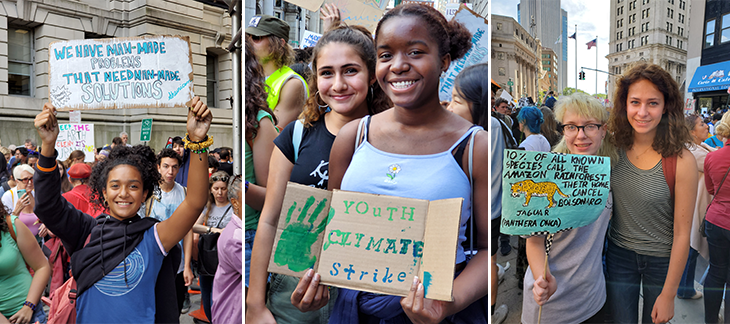
Guterres was titled the “keynote listener.” That’s because his job for the day was to listen and learn from young leaders. “Indeed, I’ve been more times keynote speaker than a keynote listener. But that is one of the problems of global leaders,” he said. “They talk too much and they listen too little.”
The young climate leaders came with a clear message for world leaders. “Is it really too much to ask you to stop wasting time and walk the talk?” said Komal Karishma Kumar. She’s a young climate activist from Fiji. That’s an archipelago of more than 300 islands in the South Pacific.
“From young leaders all over the world, we are here in our rightful place to demand consequential climate action,” said Kumar.
She came ready with a list of demands. These included the phasing out of fossil fuels and a boosting of climate education. She also demanded the inclusion of youth in policy decisions. And she called upon global leaders to fulfill their commitments to the U.N. Green Climate Fund. This international agreement assists low-income countries affected by the climate crisis. Fiji is one of those nations.
All of these commitments are necessary to fulfill the goals of the 2015 Paris Accord. At that time, 195 nations agreed to a goal of limiting global warming to less than 2° Celsius (3.4°Fahrenheit). Reaching this goal will be difficult. That’s because much of the world depends on burning fossil fuels such as oil and coal for energy. (And the United States has since withdrawn from the agreement.)
“It’s tricky because at this point our entire economic and social system is based on the energy we use,” Kallan Benson told Science News for Students. “And that energy comes from burning fossil fuels,” she notes. Benson is a 15-year-old organizer with FridaysforFuture in Washington, D.C. She says, “We have to get rid of such a key part of our society [those fossil fuels] in order to solve this crisis.”
Youth are now organizing and calling on those in power to act because they feel that time is limited. The longer it takes to cut greenhouse-gas emissions, the more Earth’s atmosphere will eventually warm.
Youth demand more than a seat at the table
To meet global climate goals, youth activists say they need to be included in solutions. The U.N. Youth Climate Summit is one step toward upping their involvement.
“We appreciate that youth are now at the table where the discussions are being held,” Wanjuhi Njoroge told a crowded U.N. council chamber. “But our voices and our inputs must be allowed to influence these decisions,” she said. Njoroge is a climate activist in her 20s from Kenya.
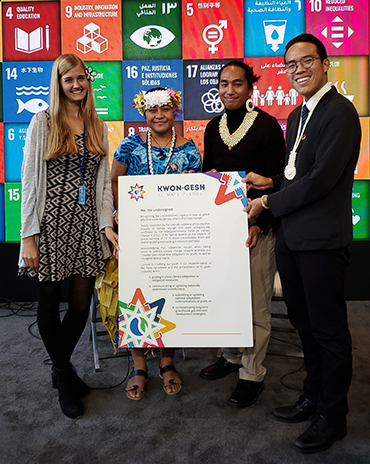
Later in the day, Nina Möger Bengtsson, a young climate activist from Denmark, echoed this idea. “We speak up in our local communities. We change our diets. We change our habits. We take to the streets,” Bengtsson told global leaders and fellow youth. “Yet we’re not included in the formal decision-making process.”
Bengtsson pointed to the work Denmark has done to bridge the gap between youth and policymakers. For instance, her country has established a national youth council with direct access to the prime minister.
The summit also marked the launch of the Kwon-Gesh Pledge. The Marshall Islands (southwest of Hawaii) and Ireland initiated the pledge. It asks U.N. leaders to include youth in carrying out goals of the Paris Accord. This pledge is perhaps the most concrete measure to include youth in policymaking.
Anfernee Nenol Kaminaga is a climate leader working to engage youth in climate activism in the Marshall Islands. In a panel discussion about the pledge, he said that the youth he works with want “to be taken into consideration in decision-making models and to not be tokenized.” By tokenized, he means being offered symbolic, but not meaningful representation.
Climate change is impacting youth now
Many young climate leaders at the summit said they were acting to save not just their future, but also their current homes. Some have seen first-hand the ways climate change is already disrupting the environment and affecting people.
Kristen Brown, 17, is among them. She lives on the Hawaiian island of Oahu. “Climate change is impacting my home environment through erosion,” she said. “On different parts of the island there is a lot of coastal erosion that is causing the roads to crumble into the sea.” She added, “This is happening right before our eyes.” And erosion is just one of the many impacts she has seen near her home.
In her role as the Hawaii State Logistics Director with the U.S. Youth Climate Strike Hawaii, Brown has been working toward a better future for everyone. “We need to fight for climate justice,” she told Science News for Students. “Climate justice” is a framework for thinking about equality and social issues alongside climate change.
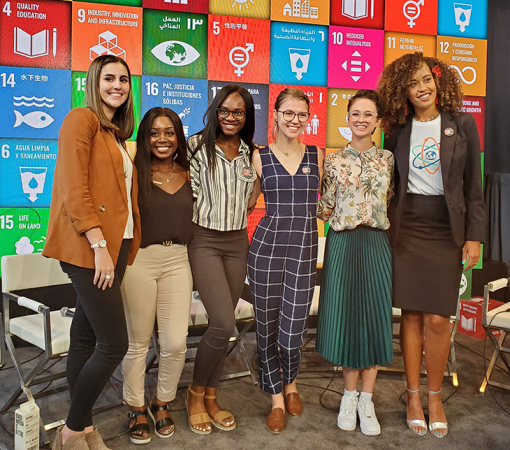
Edgar Sanchez, 14, is working to protect his home of Monterrey, Mexico. “I live in one of the most polluted cities in Latin America. And it’s a problem that I wake up to each day,” he told Science News for Students. “Sometimes I can’t go to recess because it’s just so polluted. We can’t run. We can’t go outside.”
To change this, Sanchez has been giving presentations on the climate crisis. He also has been encouraging more people to carpool. Vehicles are responsible for most of the city’s pollution, he says.
Faatupu Simeti, 24, is working to protect her country of Tuvalu. This low-lying island nation is quickly being engulfed by rising seas. “We are really, really affected by climate change,” she told Science News for Students. As a data analyst for the country’s Department of Climate Change and Disaster, she is working to better assess the island’s vulnerabilities and then to come up with solutions.
While some places are more vulnerable to climate change than others, no place is immune. Even the very ground along the East River, on which the U.N. headquarters sits, could flood due to sea-level rise as soon as 2100.
Josie Benton, 15, is a climate leader from New York City. She points out that in order to make real change, we’ll have to first start acknowledging how dependent people are on the environment. “Nature isn’t this thing that’s far off in the distance,” she points out. “It’s something that we live with.”
Youth-driven and just climate solutions
Young activists didn’t just demand action from global leaders. They also came ready with solutions and turned to other young adults for solutions. Before a panel of judges, climate leaders under 30 pitched some of their proposals to address climate change and related inequalities through technology.
Brighton Mabasa is an early-career meteorologist. He works at the South African Weather Service, near Johannesburg. He has proposed a weather app for small, rural farmers. These farmers often fail to get the climate information they need. And when they do get it, he said, it is not widely understood. His app works by crowdsourcing data so that farmers can have more accurate, localized data. Farmers can use their smartphones’ sensors to collect information for use by others. In this way, the farmers become citizen scientists.
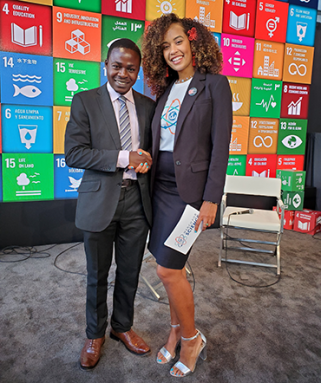
Monika Selina Seyfried is in her 20s and lives in Poland. She proposed an innovative solution to cut the high carbon footprint of data. She’s referring to the fact that the collection, storage and use of data require a lot of energy. DNA, though, is a far more efficient way to store information, said Seyfriend. Her initiative, Grow Your Own Cloud, looks to store the world’s data in liquid DNA.
It’s not just tech solutions that will solve problems triggered by a changing climate. Throughout the summit, youth climate leaders emphasized the need for interdisciplinary solutions to address emerging crises.
“I learned that the climate crisis cannot be siloed into buckets,” Priyank Hirani, 30, told Science News for Students. He’s an electronics engineer who has moved into tackling environmental issues in his home nation of India. Water, he notes, has become “an economic crisis, institutional crisis, political crisis.” Today he leads a project, Water-to-Cloud, that builds platforms for monitoring river pollution in India.
“Climate justice is crucial,” he adds. “The communities that are most affected by climate change are often the ones that least contributed to it.” By that, he’s referring to the fact that the greenhouse gases contributing to climate change have come mostly from wealthy countries. Yet low-income nations will feel many of the effects.
Youth leaders made clear that they are not afraid to fight for a world where climate justice flourishes. “I speak on behalf of the organized Youth for Climate student movement of Argentina,” said Bruno Rodriguez, 19. “Our movement understands that power concedes nothing without struggle.”
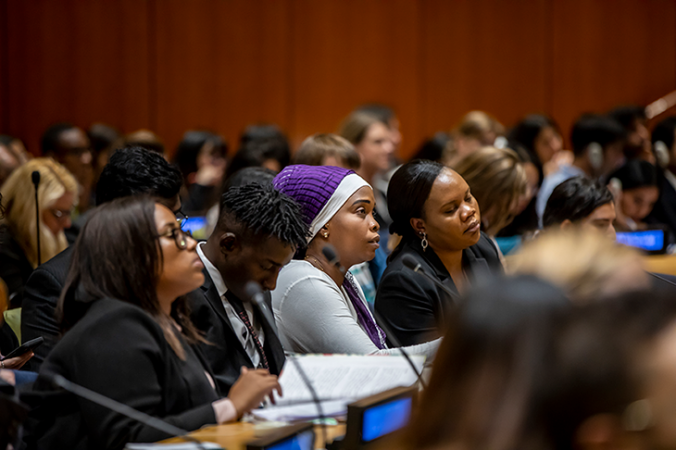
(Note: This story was corrected on September 25, 2019, to better describe Priyank Hirani.)







